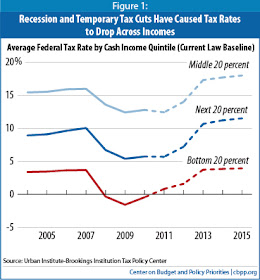Lynn Stout provides us with a vision of how humans are programmed to perform as members of society in her book Cultivating Conscience: How Good Laws Make Good People. She tells us that most people are driven by conscience, or by a tendency to exhibit prosocial behavior characterized by sharing and cooperation. She examines results from behavioral psychology experiments and arrives at this conclusion:
2. beliefs about others’ prosocial behavior
3. the magnitude of the benefits to others
For this prosocial behavior to be expressed, it is necessary for the individual to feel that he is associating with others who are also behaving unselfishly. If the individual believes others are not "playing fair" or are trying to take advantage of him, then he will be tempted not only to act selfishly himself, but perhaps also to punish those who are abusing the system.
What we have then is a virtuous cycle where unselfish behavior can breed more unselfish behavior. However, the converse is also true. If selfish actions become common, then they can initiate more selfish responses and a sort of death spiral ensues.
"We must hope our society has not reached some tipping point where declining prosociality becomes an irreversible, self-fulfilling prophecy. Some experts predict that once a nation becomes too poor in trust and cooperation, stagnation and decline inevitably follow."
Are there societies where such a negative trend has taken place? Could the US be approaching such a tipping point?
In his book, Boomerang: Travels in the New Third World, Michael Lewis provides us with a view of Greece that suggests it is a country that may have already begun to descend in such a downward spiral.
Lewis provides us with this fundamental observation about life in Greece.
And then there is the matter of taxes.
Stout emphasizes how important it is for the authorities to set a good example for the citizens. What do the Greeks get to observe? The Greek government rang up a string of years where public debt was greatly under reported. In discussing this occurrence with the current finance minister, Lewis learns this:
‘What?’
He smiles.
‘The first thing a government does in an election year is to pull the tax collectors off the streets.’
‘You’re kidding.’
Now he’s laughing at me. I’m clearly naive."
One might begin to wonder what social interactions are like, given such an environment.
This certainly sounds a lot like what Stout predicted as the outcome for a society that allows itself to be motivated by selfishness.
That is a rather frightening description of life in a modern state. One has to wonder what the future might hold in store for Greece and its people.
With the political rancor, the anger over the recent financial debacle, and the demonstrations expressing frustration at income inequality, one might be wise to spend a few minutes wondering if we might become Greece someday—socially, not financially. While we do not seem to be anywhere close to the state Greece is in, the trends are not healthy. Perhaps the best thing to do is remember what Stout taught us about the better angels of our nature and act accordingly.
Remember to pay your taxes—most people do, although we only hear about the ones who don’t. When arguing politics, don’t assume intellectual dishonesty on the part of your opponent; inculpable ignorance or sheer stupidity are much more satisfying explanations. With all of the politically directed cash flying around it is easy assign dishonest motives to politicians when they do strange things. In this case—especially in this case—inculpable ignorance or sheer stupidity are much more likely explanations. An occasional smile at a passing stranger wouldn’t hurt either.
So keep the faith. According to Stout, it is really, really important that you do.















